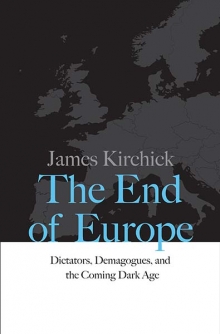Overseas observers of American politics are certainly disconcerted by the degree of domestic political animosity in the U.S., and by the self-inflicted delegitimization of its democratic institutions in the last two decades. Those who observe similar events from Italy feel a particular shiver run down their spine. Memories of what happened in the early 1990s, when Italy’s state and institutions suffered a severe loss of credibility and the political fight turned fierce and acrimonious, still haunt. Since then, the Italian economy has never recovered, in part because investors need a stable political framework to take risks, particularly around intangible investments.
At that time, Italy’s regional divide became so contentious as to cast doubt over the very unity of the state. The public debt grew at record levels for peace time. Financial instability was so severe that Italy’s exchange rate agreements with European partners were suspended. However, it was the discredit suffered by Italy’s political class that caused the economy to stop growing. The parties’ reciprocal accusations of corruption and hidden interests tore apart the citizens’ sense of community and created a climate of profound mistrust. In the mid-1990s, Italy’s GDP per capita was higher than the United Kingdom, and aligned with Germany’s and France’s. Since then, the income of Italians has dropped by 30% compared to European counterparts.
For economists, the “Italian disease” is still kind of a mystery. In fact, it is especially elusive because the causes of Italy’s economic decline were rooted in political events. In some ways, those events are perhaps similar to what we see in the U.S. today: Deep fractures in government degrade its efficacy, the legitimacy of the highest public offices has been denigrated, and there are attempts to manipulate judicial powers. All this has taken place amid a frenetic electoral cycle in a hyper-partisan media landscape.
On top of this, the International Monetary Fund (IMF) recently estimated that U.S. government debt may amount to 160% of the GDP by 2030, reaching exactly the same level as Italy today. Rising public debts, regardless of why they exist, are a strong amplifier of political uncertainty, and transmit instability to the rest of the economy. In Italy’s experience, this has happened mostly through the effects of political shocks on the prices of government bonds, which are the backbone (the “safe asset”) of the financial system. This produces what is called a “doom-loop” between sovereign and banks debts. In the U.S., the Federal Reserve can mitigate those effects, but this may happen at the cost of eroding the central bank’s credibility in pursuing its monetary objectives. In the long term, risk premiums on the government bonds might become permanently higher and affect economic growth.
The particular uncertainty originating from the state’s institutional framework especially affects “intangible” investments, such as those in research, intellectual property, software, and changes and improvements in labor and capital organization. These investments are riskier than tangible ones because they require high capital engagements and high start-up costs in the face of uncertain outcomes and returns that are postponed over time. Moreover, labor and capital reorganization requires associated political reforms. Finally, if a country’s stability is questioned, banks and financial investors are more wary of engaging and funding intangible investments, from which they will not be able to recover any material collateral in case of failure. Empirical experience and statistical data confirm that for intangible investments to flourish, a first requirement is stability in political and institutional frameworks.
Unfortunately, it is precisely those investments in new ideas, new ventures, new research, or still unknown advanced technologies that will be vital for every country’s development and well-being in the decades to come.
When Italy experienced its phase of exceptional political turbulence and the loss of credibility in its institutions, the economy suffered a dramatic setback. Public and private investments collapsed, and the intangible ones fell by more than 20% between 1992 and 1993. The consequences are still felt today because Italian productivity has never recovered. Entrepreneurs were afraid of immobilizing their capital in an unstable political context. Instead, they chose to cut costs, beginning with the number of employees, and piled pressure on the government to introduce any form of flexibility that allowed firms to expatriate at the first signs of instability. Thirty years later, none of the major Italian private corporations of the time — Fiat (now FCA), Luxottica, Fininvest, or Pirelli, among others — has its legal seat in Italy.
Of course, the early 1990s were a spectacularly wrong time for skirting intangible investments. It was the time in which information technologies emerged as the most transformative power in the production of traditional goods and services, opening the way to innovative solutions, higher productivity, and better-paying jobs.
In many ways, the present moment is an exceptional one too, albeit with differences from the 1990s. Whatever one thinks of the claim that we entered an age of secular stagnation or of excess of savings over investments, there is no doubt that the U.S. needs significant infrastructure investment to bring the quality of the capital stock in line with other advanced or “advancing” economies. The most striking hole is where public and private investments should leverage each other: Just think of the American delays in 5G networks and other important infrastructures, where the material component is indistinguishable from the immaterial one, from air and ground transportation to medical services. The state’s role in incentivizing lower-emission means of power generation or greener transportation, either private or public, is far behind the curve. There is ample space for a catch-up, but making the government work proficiently with the private requires political stability.
Maintaining people’s trust is of paramount importance. The political climate in the U.S. in recent years has been disappointing for anyone who understands the relevance (economic and otherwise) of public consensus around democratic rules and values. Governments must demonstrate to citizens that they (the people) ultimately benefit from the democratic system. In order to do that, improving social policies, such as by upgrading the federal and state safety nets, is key, as well as increasing poor families’ access to quality education. The Italian experience shows that the loss of political credibility and the weakening of the economy are self-sustaining. Once a vicious circle is generated, it is extremely difficult and enormously painful to reverse it.







Commentary
How political uncertainty hurts the US economy: Lessons from Italy
December 18, 2020